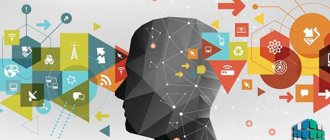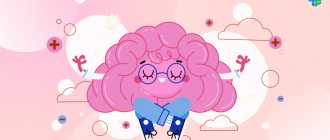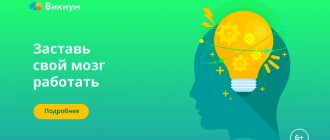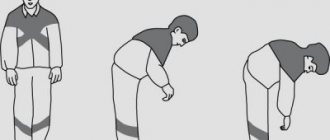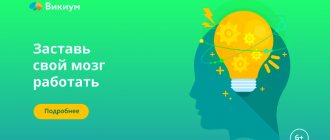Updated July 24, 2021 754 Author: Dmitry Petrov
Hello, dear readers of the KtoNaNovenkogo.ru blog. Most people have heard of deduction from the Sherlock Holmes books, films and TV series.
In fact, the famous detective used a whole arsenal of logical methods, backing it all up with devilish powers of observation and professional instinct.
Today I will tell you what deduction is, how it differs from induction, how to draw conclusions correctly and incorrectly.
Deduction is a method of logical thinking
The term is derived from the Latin word deductio - deduction .
There is a simple definition: deduction is a method of thinking that involves moving from the general to the specific .
What is true for a whole class of things is also true for every object belonging to that class.
Deductive reasoning begins with a premise—a general rule that is assumed to be true. Then, using logical links, a particular conclusion must be derived from the premise.
Let's explain with an example:
- Premise: people have heads (the object class “person” has the general property “having a head”).
- Logical link: Petya is a person (he belongs to the “person” class).
- Conclusion: Petya has a head.
To draw such a conclusion, it is not at all necessary to know Petya personally.
How to learn to think deductively?
We've talked before about the slow mindset. If you want to learn the deductive method, you will need to be observant. Be “corrosive”, try to pay attention to even the most inconspicuous details. Start small, for example, by studying the arrangement of furniture in a room when you are visiting someone. When talking to a person, pay attention to how he talks, gestures, and where he looks. Over time, you will learn to notice what is hidden from prying eyes.
If you don't have a small notebook, now is the time to buy one. Carry it with you always to record all your observations. Over time, spatial descriptions will turn into iron facts. Don't forget that you will need an extensive knowledge base. Expand your horizons every day: read, watch films and listen to music of different genres, travel, meet people of different professions and interests.
Where is deduction used?
We use this kind of thinking every day without even realizing it. We don’t notice that logical chains are being built in our heads: warm clothes protect from the cold, it’s cold outside, a jacket means warm clothes, I’ll put on a jacket. Everything happens automatically in a split second.
But the method of deductive thinking is used consciously in many areas:
- Disputes and discussions . When you need to convince your opponent to accept your point of view, it is enough to find an obvious statement with which he agrees. And then logically connect the premise with the desired conclusion. A manager at a car dealership convinces a client to buy an expensive car: “Make up your mind, we only live once. Why put off your dream?
- Mathematics . The proof of the theorem is based on axioms - statements that are true by default.
- Forensics . Using the overall picture of the incident, the expert establishes the individual circumstances of the case.
- The science . Deduction is the main logical method of proof. A scientist takes a hypothesis (what is it?) that needs to be confirmed or refuted, and draws consequences. If during experiments it is possible to discover these consequences, then the hypothesis is considered proven.
- Philosophy . This is a science where experiments are mental and proofs are logical. In the same physics, you can throw an apple into the sky to verify the existence of gravity. Deduction in philosophy is a way to logically justify a hypothesis.
How is induction different from deduction?
The difference between deduction and induction is obvious. If in the first case we focus on the characteristic features of a separate class of objects, then in the second, the concentration of our attention occurs around one object. This is the main difference between deduction and induction.
For example, all people are mortal. Knowledge of this suggests that the individual is also mortal. If we take information that a person died after reaching old age, then we conclude that the same fate awaits everyone who lives to old age.
The main thing in the deductive method is to identify a certain characteristic feature and, on the basis of this, make an assumption that this same feature is characteristic of the entire group or its specific representative. This is how inductive reasoning differs from deductive reasoning.
Thus, deductive and inductive techniques are opposites. But they allow you to come to a certain conclusion that proves this or that fact.
If we return to the question of Sherlock Holmes, the detective used both methods or combined them. We do not always have all the information about a group of objects, but having studied the characteristics of an individual object, we can say that the same features are inherent in the remaining group.
So, researchers can find out the composition of this or that matter. They carefully collect information, for example, about a diamond specimen. Based on the data collected, they come to the conclusion that physical and chemical characteristics are common to all diamonds, and not just to one specimen.
Let us remember that there are always exceptions. And they are explained by other laws and rules. Thus, induction can safely be called reverse deduction.
Induction - what is it?
The word “induction” (from Latin inductio - guidance ) means movement in the opposite direction: from the particular to the general.
Based on individual facts, a general rule or pattern is derived.
For example:
- Kesha can talk.
- Gosha knows how to talk.
- Kesha and Gosha are parrots.
- All parrots can talk.
Conclusions obtained by inductive reasoning should not be treated as absolute truth. It is just a hypothesis that may be true or false.
The more facts support a conclusion, the more reliable it is. In our case, to get a 100% correct guess, we need to check all the parrots in the world. If at least one does not speak, then the conclusion is false.
Induction is of great importance for scientific knowledge . Many discoveries have been made thanks to this method. A scientist observes individual phenomena, identifies connections and patterns between them, generalizes and puts forward a scientific hypothesis.
For example, Aristotle discovered:
- during an eclipse, the Earth casts a round shadow on the Moon;
- the ship disappears over the horizon in parts - first the hull leaves, but the sails are still visible;
- the starry sky looks different from different parts of the planet.
From these facts, by induction, the Greek thinker concluded: The Earth is spherical.
Thinking training
The most spontaneous answer to the question of how to become Sherlock might sound like this: “First, buy yourself a black coat.” If we use the terminology of the American psychologist, Nobel laureate Daniel Kahneman, who published the book “Thinking Slowly... Decide Fast” in 2011, this is a reaction of the so-called “fast thinking” - a system that is responsible for momentary knowledge of the world and cataloging instinctive sensations. “Fast thinking” reacts to circumstances instantly and very directly, as a result of which it often makes mistakes, forcing us to make irrational decisions.
But in order to think like Sherlock Holmes, you need to use a different system - “slow”. It is she, according to Kahneman, who is responsible for the deliberate and conscious formation of thoughts, decisions, conclusions and assessments. Like any function of the human brain, the slow thinking system can be strengthened and developed.
As in sports, training should begin with light exercises in small quantities, gradually moving to more complex and longer ones. To begin with, you can borrow several school textbooks from friends in different subjects: mathematics, physics, chemistry and other disciplines that involve solving problems. This will help not only to train the slow thinking system (after all, it is this system that is used in the process of intellectual activity), but also to broaden one’s horizons, restoring knowledge lost since schooling and identifying interesting scientific areas for study.
With proper organization and planning, a home office is not a punishment, but an opportunity. For business - to save resources, for employees - to get rid of the feeling that life is passing by. If you do not neglect the rules of the organization, learn management from a distance, use modern technologies and systems, you can set up an effective home office for employees in just one day. More about the BeeFREE solution from Beeline Business at the link.
Corrosiveness is another quality required by a future master of deduction. To cultivate it in yourself, you need to find areas that truly arouse curiosity. What exactly they will be, by and large, does not matter: an emotional response always pushes a person to deeply study a subject, forces him to constantly increase the amount of knowledge, and with it the extent of the border of contact with the unknown, the existence of which invariably prompts the mind to new searches.
History of the method of deduction
The theory of deduction was created by the ancient Greek thinker Aristotle. He formulated the basic rules for drawing conclusions, which are based on the connection between the genus and the individual thing. Aristotle called such conclusions categorical syllogisms.
They constantly tried to compare deduction with other methods of cognition, trying to find out what is better and what is worse. The French philosopher Rene Descartes contrasted deduction with intuition. In his opinion, intuition provides direct access to genuine knowledge, and deduction only allows you to extract information through reasoning.
Francis Bacon mercilessly criticized deduction. Deductive reasoning does not provide new information, but simply sheds light on a particular case of a general rule. Bacon considered induction to be the correct way to comprehend new truths.
Gottfried Wilhelm Leibniz , on the contrary, called deductively derived knowledge "true in all possible worlds."
In fact, all methods of cognition work in close conjunction with each other :
- Intuition helps the scientist understand in which direction to move, what is important and what is not.
- With the help of induction, it is possible to combine a set of disparate facts into a single assumption.
- Deductive logic helps test this assumption: if the consequences are true, then the hypothesis itself is true.
Examples of deductive reasoning
At first glance, this definition may seem somewhat difficult to understand. But in reality everything is very simple. To understand how deductive thinking works, here are some examples:
- If all living people are mortal, then a particular man or boy is also mortal, since they are also people.
- Birds fly with feathers. If a parrot has feathers, then it is a bird.
- The most iron is found in red meat. We see that beef is meat with a reddish-brown tint; accordingly, it contains more iron than other types of meat.
- Reptiles belong to the cold-blooded category. Snakes are reptiles, which means they are similarly cold-blooded.
- If A equals B and B equals C, then A = C.
Deduction and induction: how to avoid false conclusions
When you wander along logical paths, it’s easy to take a wrong turn . In deduction, if a general statement is false, then the conclusions from it will be false. In induction, insufficient evidence produces an erroneous assumption. Just because one apple is wormy doesn't mean all the others are.
The most dangerous are the erroneous conclusions that are obtained by combining induction with deduction.
Imagine a girl who avoids relationships with the opposite sex due to a bad experience. She thinks like this:
- Inductively obtaining an unreliable conclusion. Sasha cheated on me, Seryozha beat me, Kolya drank all the money away;
- Sasha, Seryozha and Kolya are men;
- all men are assholes.
- all men are goats;
The problem is that the conclusion “all men are assholes” is based on an incomplete sample. Sasha, Seryozha and Kolya are not all men in the world.
An example of a failed deduction:
Abduction concept
Abduction is an independent offshoot of the stage of scientific research, which asks the general question: “In what way can a person create a true and testable theory about the world around him?” How did certain judgments appear in the human mind, on the basis of what thought processes and data?
One of the leading representatives of analytical philosophy, Charles Peirce, identifies abduction as one of the main classes for constructing a conclusion (together with induction and deduction). It brings together all work activities that create new theories and concepts.
Deduction proves that the predicted result is an obvious consequence of the operation of the general rule in relation to a specific case. Abduction allows you to build a new explanatory hypothesis on the basis of a general rule and an identified fact.
Theory as a special form of scientific knowledge
Theory is a set of conclusions that reflect objectively existing relationships and connections between the phenomena of objective reality. Thus, theory is an intellectual reflection of reality. Theoretically, each conclusion is derived from other conclusions based on some rules of inference. The ability to predict is a consequence of theoretical constructs. Theories are formulated, developed and tested using the scientific method.
A theory is a doctrine, a system of ideas or principles. This is a set of generalized provisions that make up a science or its section. Theory acts as a form of synthetic knowledge, within which individual concepts, hypotheses and laws lose their former autonomy and become elements of an integral system.
There are other definitions of theory, in which any conclusion is called such, regardless of the objectivity of this conclusion. As a result, various hypothetical constructs are often referred to as theories, such as the geosyncline theory, etc. This can be seen as an attempt to give weight to the hypothetical construct, that is, an attempt to mislead.
In the pure sciences, a theory is an arbitrary set of sentences of some artificial language, characterized by precise rules for constructing expressions and understanding them.
Any theory performs a number of functions. Let us denote the most significant functions of the theory:
- theory provides the user with conceptual structures;
- theoretical terminology is being developed;
- theory allows us to understand, explain or predict various manifestations of the object of the theory.
Historical and logical.
It is necessary to distinguish between objective logic, the history of the development of an object and methods of cognition of this object - logical and historical.
Objective-logical is a general line, a pattern of development of an object, for example, the development of society from one social formation to another.
Objective-historical is a specific manifestation of a given pattern in all the infinite variety of its special and individual manifestations. In relation, for example, to society, this is the real history of all countries and peoples with all their unique individual destinies.
From these two sides of the objective process follow two methods of knowledge - historical and logical.
Any phenomenon can be correctly known only in its emergence, development and death, i.e. in its historical development. To know an object means to reflect the history of its origin and development. It is impossible to understand the result without understanding the path of development that led to this result. History often moves in leaps and zigzags, and if you followed it everywhere, you would not only have to take into account a lot of material of lesser importance, but also often interrupt your train of thought. Therefore, a logical method of research is necessary.
The logical is a generalized reflection of the historical, reflects reality in its natural development, and explains the need for this development. The logical as a whole coincides with the historical: it is historical, cleared of accidents and taken in its essential laws.
By logical they often mean a method of knowing a certain state of an object over a certain period of time in abstraction from its development. This depends on the nature of the object and the objectives of the study. For example, to discover the laws of planetary motion, I. Kepler did not need to study their history.
As research methods, induction and deduction are distinguished.
Induction is the process of deducing a general proposition from a number of particular (less general) statements, from individual facts.
There are usually two main types of induction: complete and incomplete. Complete induction is the conclusion of any general judgment about all objects of a certain set (class) based on consideration of each element of this set.
In practice, forms of induction are most often used, which involve a conclusion about all objects of a class based on knowledge of only part of the objects of a given class. Such conclusions are called conclusions of incomplete induction. They are the closer to reality, the deeper, more significant connections that are revealed. Incomplete induction, based on experimental research and involving theoretical thinking, is capable of producing a reliable conclusion. It is called scientific induction. Great discoveries and leaps of scientific thought are ultimately created by induction - a risky but important creative method.
Deduction is a reasoning process that goes from the general to the particular, less general. In the special sense of the word, the term “deduction” denotes the process of logical inference according to the rules of logic. Unlike induction, deductive inferences provide reliable knowledge provided that such a meaning was contained in the premises. In scientific research, inductive and deductive thinking techniques are organically connected. Induction leads human thought to hypotheses about the causes and general patterns of phenomena; deduction allows one to derive empirically verifiable consequences from general hypotheses and in this way experimentally substantiate or refute them.
An experiment is a scientifically conducted experiment, a purposeful study of a phenomenon caused by us under precisely taken into account conditions, when it is possible to monitor the progress of changes in the phenomenon, actively influence it using a whole complex of various instruments and means, and recreate these phenomena every time the same conditions are present. and when there is a need for it.
The following elements can be distinguished in the structure of the experiment:
a) any experiment is based on a certain theoretical concept that sets the program of experimental research, as well as the conditions for studying the object, the principle of creating various devices for experimentation, methods of recording, comparison, and representative classification of the obtained material;
b) an integral element of the experiment is the object of research, which can be various objective phenomena;
c) a mandatory element of experiments are technical means and various types of devices with the help of which experiments are carried out.
Depending on the sphere in which the object of knowledge is located, experiments are divided into natural science, social, etc. Natural science and social experiments are carried out in logically similar forms. The beginning of the experiment in both cases is the preparation of the state of the object necessary for the study. Next comes the experiment stage. This is followed by registration, description of data, compilation of tables, graphs, and processing of experiment results.
The division of methods into general, general scientific and special methods generally reflects the structure of scientific knowledge that has developed to date, in which, along with philosophical and particular scientific knowledge, there is a vast layer of theoretical knowledge that is as close as possible to philosophy in terms of its degree of generality. In this sense, this classification of methods to a certain extent meets the tasks associated with considering the dialectics of philosophical and general scientific knowledge.
The listed general scientific methods can simultaneously be used at different levels of knowledge - empirical and theoretical .
The decisive criterion for distinguishing methods into empirical and theoretical is the attitude to experience. If the methods focus on the use of material means of research (for example, instruments), on the implementation of influences on the object under study (for example, physical dismemberment), on the artificial reproduction of an object or its parts from another material (for example, when direct physical influence is for some reason impossible), then such methods can be called empirical.
Additional Information:
Observation is a purposeful study of objects, based mainly on data from the senses (sensations, perceptions, ideas). In the course of observation, we gain knowledge not only about the external aspects of the object of knowledge, but - as the ultimate goal - about its essential properties and relationships.
Observation can be direct or indirect with various instruments and technical devices (microscope, telescope, photo and film camera, etc.). With the development of science, observation becomes more complex and indirect.
Basic requirements for scientific observation:
— unambiguity of the plan;
— availability of a system of methods and techniques;
— objectivity, i.e. the possibility of control by either repeated observation or using other methods (for example, experiment).
Observation is usually included as part of the experimental procedure. An important point in observation is the interpretation of its results - deciphering instrument readings, a curve on an oscilloscope, an electrocardiogram, etc.
The cognitive result of observation is description - recording, using natural and artificial language, initial information about the object being studied: diagrams, graphs, diagrams, tables, drawings, etc. Observation is closely related to measurement, which is the process of finding the ratio of a given quantity to another homogeneous quantity taken as a unit of measurement. The measurement result is expressed as a number.
Observation is particularly difficult in the social sciences and humanities, where its results largely depend on the personality of the observer, his life attitudes and principles, and his interested attitude towards the subject being studied. In sociology and social psychology, depending on the position of the observer, a distinction is made between simple (ordinary) observation, when facts and events are recorded from the outside, and participant observation (participant observation), when the researcher is included in a certain social environment, adapts to it and analyzes events “from the inside.” In psychology, self-observation (introspection) is used.
During observation, the researcher is always guided by a specific idea, concept or hypothesis. He does not simply register any facts, but deliberately selects those that either confirm or refute his ideas. In this case, it is very important to select the most representative, i.e. the most representative group of facts in their interrelation. Interpretation of observation is also always carried out using certain theoretical principles.
With the help of these methods, the cognizing subject masters a certain amount of facts that reflect individual aspects of the object being studied. The unity of these facts, established on the basis of empirical methods, does not yet express the depth of the essence of the object. This essence is comprehended at the theoretical level, on the basis of theoretical methods.
The division of methods into philosophical and special, into empirical and theoretical, of course, does not exhaust the problem of classification. It seems possible to divide methods into logical and non-logical . This is advisable, if only because it allows us to relatively independently consider the class of logical methods used (consciously or unconsciously) in solving any cognitive problem.
All logical methods can be divided into dialectical and formallogical . The first, formulated on the basis of the principles, laws and categories of dialectics, orient the researcher towards a way to identify the substantive side of the goal. In other words, the use of dialectical methods in a certain way directs thought to reveal what is associated with the content of knowledge. The second (formal logical methods), on the contrary, do not focus the researcher on identifying the nature and content of knowledge. They are, as it were, “responsible” for the means by which the movement towards the content of knowledge is clothed in pure formal logical operations (abstraction, analysis and synthesis, induction and deduction, etc.).
The formation of a scientific theory is carried out as follows.
The phenomenon being studied appears as concrete, as a unity of the diverse. It is obvious that there is no proper clarity in understanding the specific at the first stages. The path to it begins with analysis, mental or real dissection of the whole into parts. Analysis allows the researcher to focus on a part, property, relationship, or element of the whole. It is successful if it allows for synthesis and restoration of the whole.
The analysis is complemented by classification; the features of the phenomena being studied are distributed into classes. Classification is the path to concepts. Classification is impossible without making comparisons, finding analogies, similarities, similarities in phenomena. The researcher’s efforts in this direction create conditions for induction, inference from the particular to some general statement. She is a necessary link on the path to achieving the common. But the researcher is not satisfied with achieving the general. Knowing the general, the researcher seeks to explain the particular. If this fails, then the failure indicates that the induction operation is not genuine. It turns out that induction is verified by deduction. Successful deduction makes it relatively easy to record experimental dependencies and see the general in the particular.
Generalization is associated with the identification of the general, but most often it is not obvious and acts as a kind of scientific secret, the main secrets of which are revealed as a result of idealization, i.e. detecting intervals of abstractions.
Each new success in enriching the theoretical level of research is accompanied by the organization of the material and the identification of subordination relationships. The connection of scientific concepts forms laws . The main laws are often called principles . A theory is not just a system of scientific concepts and laws, but a system of their subordination and coordination.
So, the main moments in the formation of a scientific theory are analysis, induction, generalization, idealization, and the establishment of subordination and coordination connections. The listed operations can find their development in formalization and mathematization .
Movement towards a cognitive goal can lead to various results, which are expressed in specific knowledge. Such forms are, for example, problem and idea, hypothesis and theory.
Is this real
It's worth starting with something encouraging.
Sherlock Holmes' abilities are absolutely real. And in general, the legendary character was copied by Conan Doyle from a living person - professor at the University of Edinburgh Joseph Bell. He was widely known for his ability to guess a person's character, background and profession from the smallest details. On the other hand, the existence of one real outstanding person does not guarantee success for everyone who tries to repeat his achievements. Mastering abilities comparable to Holmes's is incredibly difficult. In a different scenario, Scotland Yard wouldn't be running around Baker Street for clues, right?
Basic output forms
Let's consider the basic forms of reasoning characteristic of logical thinking. There are not so many such forms: these are induction, deduction and analogy. They can be briefly characterized as follows.
Induction is an inference about a set based on consideration of the individual elements of that set.
In contrast, deduction is an inference about an element based on knowledge of certain qualities of the set in which it is included.
An analogy is an inference about an element (set) that conveys to it the properties of another element (set). Let's look at each method separately.
Testing the theory
It is generally believed that the standard method for testing theories is direct experimental verification (experiment is the criterion of truth). However, often a theory cannot be tested by direct experiment (for example, the theory of the origin of life on Earth), or such testing is too difficult or expensive (macroeconomic and social theories), and therefore theories are often tested indirectly. An experiment, but based on the presence of predictive power - that is, if unknown / previously undetected events follow from it and with careful observation these events are detected, then the predictive power is present.
In fact, the theory-experiment relationship is more complex. Since the theory already reflects objective phenomena previously tested experimentally, it is impossible to draw such conclusions. At the same time, since the theory is built on the basis of the laws of logic, conclusions are possible about phenomena that were not established by early experiments, but verified by practice. However, these conclusions should already be called a hypothesis, the objectivity of which, that is, the translation of this hypothesis into the rank of theory, is confirmed by experiment. In this case, the experiment does not test the theory, but clarifies or expands the provisions of this theory.
To summarize, the applied goal of science is to predict the future, both in the observational sense - to describe the course of events over which we cannot influence, and in the synthetic sense - to create the desired future using technology. Figuratively speaking, the essence of the theory is to link together circumstantial evidence, render a verdict on past events and indicate what will happen in the future if certain conditions are met.
How to develop deductive thinking?
Few people are born with the ability to think logically, but it can be developed.
Expand your horizons
To a large extent, it depends on how rich a person’s life experience is. Of course, with age, as they say, some people become wiser, while others just get older. It is assumed that a wise person is a person with a broad outlook, flexible thinking, observant and attentive. This experience is very valuable because it is not easy.
Train your brain
But what about those who don’t have it yet? Train the brain, because the human brain needs training no less than muscles. But, fearing that our visible shell – the body – will grow old, we train it first. And we remember about the brain only when it refuses to work as before, and here we call it a girl’s memory, forgetfulness or sclerosis.
Psychologist T. Timoshina wrote a book called “The Best Trainer for Your Brain” (2016). It contains exercises for the development of logical thinking, because, as the author says, the ability to think logically and “draw” correct conclusions will help any person build relationships with people around him and find his place in this world.
One hundred detective problems with tips for the development of logical thinking can also be found in Svetlana Kuzina’s e-book “Pump up your brain using the Sherlock Holmes method” (2014) (Intelligence Training series). The book can be downloaded to your computer, e-reader or smartphone by registering on the liters website.
Develop observation skills
There are not so many observant people - there are many more who do not pay attention to details. Often we cannot answer basic questions like what color are the walls in the hallway of the office where we have been working for several years. On the one hand, we don’t need it. On the other hand, the habit of noticing everything and drawing conclusions can serve you well. We will try to be more attentive and draw appropriate conclusions based on our observations. It’s not without reason that they say that observation is second nature.
© Elena Timoshenko, BBF.RU
Reviews and comments
You can rate the article and share your thoughts on the subject by posting a comment in the form below.
We also recommend reading:
- Storytelling
- 10 Commandments of a Profiler
- Traceology: when Sherlock follows a trail
- Science versus speculation
- How and why to develop thinking
- Intellectual superpowers
- The best blog materials in 2021: thinking development, brain training, self-education
- Scientific knowledge: basics
- The Development of Sherlock Holmes' Intuition
- Questions to help you understand more
- How to create a colorful character
Key words:1Cognitive science
